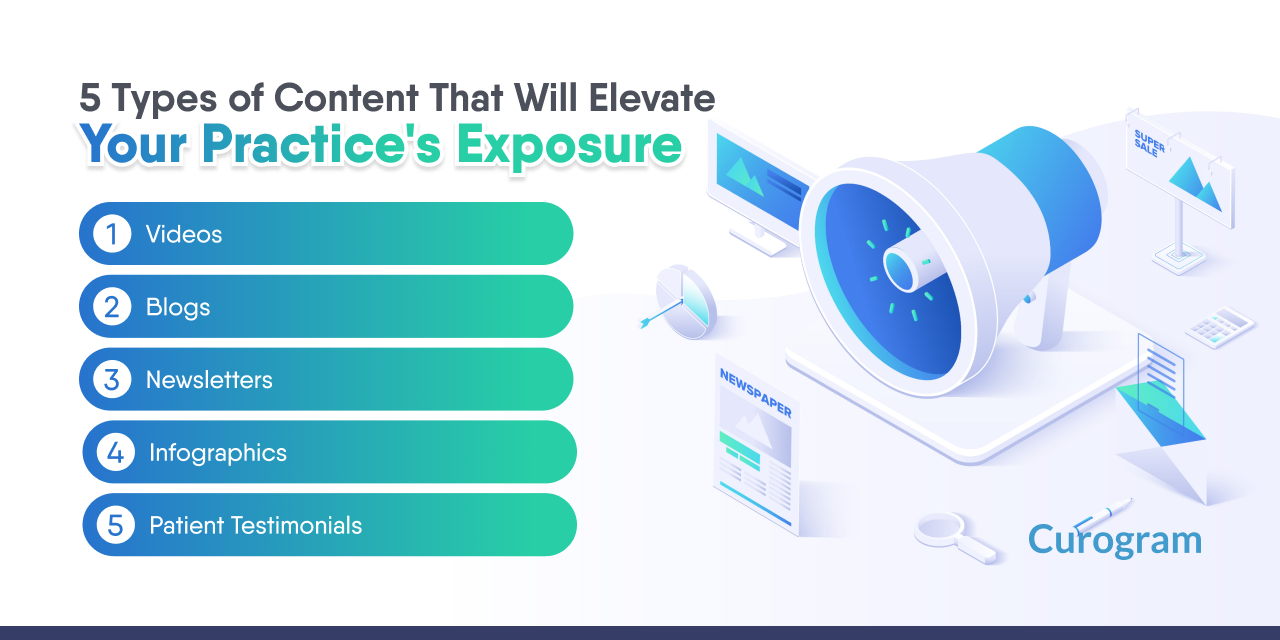How to Use Social Media to Market Your Medical Practice
There are many ways organizations can market their businesses, but social media is one of the most effective. A recent report by Statista states that...
3 min read
 Joshua Inciso
:
5/30/22 8:45 AM
Joshua Inciso
:
5/30/22 8:45 AM

The competition in the healthcare industry grows stiffer daily. Now, patients have the luxury of switching services providers almost seamlessly. Because of this, healthcare providers are searching for the best ways to retain their patients. One way to do this is through effective content marketing.
In 2019, about 7% of Google’s daily searches were health-related. Google says this means there was an average of 1 billion health-related searches daily. These days, many people feel they no longer need to visit a hospital for diagnosis or treatment since they can find answers on their own, thanks to Dr. Google.
How does this matter? Your competitors are targeting the people behind the 1 billion searches —some of which are your patients — asking Google all these health questions. And it’s not just on Google; it’s everywhere on the internet, including forums and social media. Creating content that answers the questions people are asking is a great way to generate traffic for your business and promote your practices to old, new, and prospective patients.
Adding content marketing to your healthcare marketing strategy gives you access to old and potential patients. It helps nurture and sustain your relationship with old patients and helps build new relationships with potential patients.
With the advancement in telemedicine, healthcare providers now see their patients less. Because of this, the bond between you and your patients can go weak, creating a path where they can easily switch practices because of a lack of commitment. “Out of sight, out of mind” To stop this from happening, you can create and continuously share content that will keep you at the top of your patients’ minds.
You can use 5 types of content to keep your patients engaged, informed, entertained, and committed to you. There are:
Video content is becoming increasingly popular because it’s probably the most effective. You can help prospective patients get familiar with your practice with video content. Considering the short attention span of the average person these days, many people would rather watch thirty-second to one-minute videos than read an article that gives the same information. Videos are very engaging and highly convincing. You can use them to lead viewers to your website, where they get to learn more about your services. They can also be shared easily across various channels on the internet, helping you spread the word about your practice.
Blogs are effective for many reasons, one of which is to improve online visibility. Remember that one billion health-related searches happen on Google daily? Here’s another fact: having a blog increases your chances of ranking higher in search by 434%. Additionally, once you publish 21-54 blog posts, your website traffic can increase by up to 30%.
A blog post is one of the best ways to answer the billions of health questions on the internet. With blog posts, you can provide detailed answers for your old and prospective patients, showing them that you are an expert in your field. This builds and reinforces trust. Another great thing about blog posts is that you can include all the other content types in a blog. You can add videos, infographics, and patient testimonials.
Newsletters may seem old-fashioned, but emails are still one of the most effective forms of digital marketing for any business, including healthcare. Use your email list to promote your business and improve patient retention by keeping previous and current patients updated with happenings in your clinic, the industry, and globally.
For new patients, you should include a newsletter sign-up on your website. This way, they can opt to receive the latest news and trends, too. Examples of content to send through newsletters include recent patient testimonials, links to new blog posts, staff member introduction videos, industry trends, and new government policies Newsletters are a great way to keep your practice on the minds’ of patients, even if they don’t visit your website regularly.
Many people are visual learners, which is why infographics are so popular. Infographics can help your practice share data in an easy-to-understand, visually-appealing format. For example, you can create infographics for statistics relevant to your practice, such as the number of procedures performed for a common illness (acute or chronic).
Additionally, suppose you’re a primary care doctor. In that case, you can create an infographic for the flu season that highlights how many people get the flu, the symptoms, and possible treatment and vaccination info.
A testimonial differs slightly from a review. For reviews, the patient publishes the statement (feedback) themselves, but for testimonials, you post it for them. This could be on your website, social media pages, marketing brochures, newspapers, or any other platform.
One great way to use testimonials is to use that of celebrities. If you treat a well-known and liked person either in your community or globally, you can leverage their fame to attract people to your brand.
Celebrity testimonials are not the only ones that work. The testimonial of less-popular (common) patients can also help convince other prospective patients that you are approachable and trustworthy. People feel more confident in your brand when everyday people like themselves give positive reviews about you.
Using patient testimonials is a popular and age long strategy for many. Just ensure to ask for consent before publishing a testimonial.
A bonus strategy you can use when promoting your medical practice through content marketing is to mention the powerful tools your practice utilizes and partners with to provide patient-centric care. Partnering with credible industry names and brands is another way to boost your credibility. Similar to using patient testimonials, adding names like Curogram, the all-in-one HIPAA-compliant telemedicine software, can attract patients to your practice who want the convenience the technology offers. It can also encourage current patients to maintain their relationship with you. If you’d like to learn more about how telemedicine software helps promote your practice, contact Curogram today.


There are many ways organizations can market their businesses, but social media is one of the most effective. A recent report by Statista states that...

Many medical practices need to adjust to the increasing power of patient voices, on-demand trends, and the evolving technology. Many people want to...

If you want patients to find your medical practice, you need a solid online presence. Showing in a prospective patient’s search results gives you a...